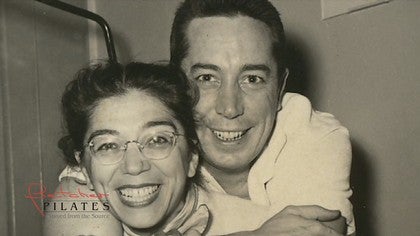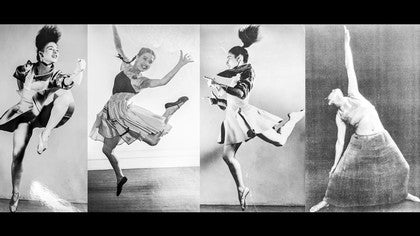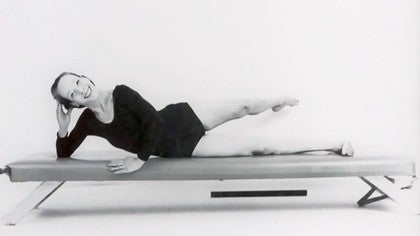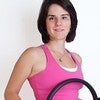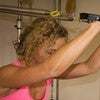Read Full Transcript
So much of the time we think of movement is something over there. Do, do, do, do, do you hear what I'm saying? Movement is a much bigger thing than that. Movement is life. Movement is life and life is movement.
[inaudible] Brian's legacy is movement. He understood movement. He saw movement, he spoke movement. Uh, everything that he did was from a place of movement. I mean, what a gift right there. And then he touched so many people and that he had such a following that he was able to get his correct work out to so many people. If you look at all the people that came on Ron Studio, whether Ron approved or not, and you look at students that they opened in, the people in that day train if huge, you know, he probably had his fingers on more instructors than anyone could easily until, until the mid nineties. I know he's inspired a hundreds of teachers in and now it's gone globally because you're curious. But, but item lines, everything.
It doesn't matter who you are, you know, one with Spina Bifida or a big movie star or whatever. Everybody's the same. [inaudible]. You know what I mean? He came from Dogpatch, Missouri. He claims dog town Missouri. But no, I have his birth certificate and he was actually not born and dog, Dogtown, Missouri.
I think that he lived in Dogtown, Missouri at some point during his early childhood. I say dog patch cause it's money and it's more [inaudible]. Well he likes to quote Gertrude Stein when someone asks her if you know she hasn't goes back home and Ron stay man would mean there's no there, there. This is New York, my miracle city. Yes. City of tall buildings. Narrow dark streets.
He was 18. He moved to St Louis First and from St Louis he had an opportunity to work in New York. I get to see him, you know, like get on with the suitcase and then rank code flaring and [inaudible]. Yeah, the stepping, he'll tell, you know, I'm off to the big city. Huh? I don't know if he had a grand plan, you know, buddy. But he had the experience in the department store and uh, I don't know where we worked up there. He worked in the advertising department at Saks fifth avenue.
He found, I think it was more of an artistic calling than it was a marketing calling, but he was, he was good at both. Yup. He met a gentleman that was uh, in the fringes of show business and yeah, he was sort of his Andre and some of the cultural one is in New York and it was their performance. It was a Martha Graham performance that really [inaudible] interaction played your mind with the young man at the time. And yeah, he got bit by the Bug [inaudible] so his Ryan tells that he just waited at gray and studio went day after day, tell Martha would actually give him an audience, I don't know how many days or how many weeks that was. We kept going back and going back cause she had to be invited in. And then finally there's, Ron says, you know, she came out and she said, you know, your determination reminds me of myself. Yes, you make day class.
And he had danced some as a young man but never had formal training. Yeah. Usually a young dance, it will start quite young or at least in their teens, you know? And so he, he basically right. Lived at Martha's studio. He was there every day. And what he says is that it was a short period he was with her, but it really changed his entire life. I mean to have been in the same room with that woman and to hear what she had to say about movement.
We didn't get any salary there that we had to do whatever we could do to make a few bucks to pay this exorbitant rent and Dubai, Dubai Spaghetti, there's no money in the dance. So Ron had like his own, uh, so of shows that he did, did a lot of old publicity shots of him, you know, very grand, you know, and my dad really didn't like that. You'd like complete loyalty of course, but she probably knew you can't make any money just doing gram concerts. Yeah. He had other opportunities. Uh, one of his, his favorite things since leap and the net will appear. And that was very much the way Ryan, um, went through his life. He laughed and laughed and laughed and over and over the net appeared.
I feel like something just took me by the top of their head and, and led me around it here. [inaudible] he was called to perform with the h Gina Mara on Broadway. He, Courtney, did he choreographed? No, he didn't loot song. That was one of his early books show public fine, but it's on and he would spin it with seven performances. [inaudible] well, he had a knee and [inaudible] and it, it got to be very serious. I had no money. I said, DeMatha, what is it? L W it'll work out. It'll work itself out. So, and the dancers all knew that if you wanted to get rehab, you go to Joe's.
So mind you, I had been totally, totally, uh, set in my head that I was not going to stay there and I was going to get out as quickly as possible. And about 10 minutes on the reformer, I thought, Oh yes, I'm in the right place. The first thing Joe had him do was to sit on the reformer. He straddled the machine and he sat the edge. And then Joe Politesse told him, now I want you to put down one vertebra after the other, all the way down, all the way down. Politely said to him, are you straight? And with the German accent, that didn't. Then I wondered what has that got to do with the work? Were you aware during the years in New York that he met Charles?
Oh God, yeah. Way Back in his Broadway days, John was anathema white, the beauty. So he was a wonderful man. He was always there. And there's a lot to be said for that. I don't think that Ron could have done what he did without chime. He started with Chow and 1948 and he was still with Martha at the time, and there were periods of time where he was on the road. There were periods of time where he was living in different cities, putting together shows and clubs in Las Vegas.
He lived out of the country for awhile. He was in Paris, so he had many jobs, but whenever he was in New York, he would go back to the studio. Well, I'm choreographed for the ice capades right. 12 and 13, he did, he was the first non ice skater to be asked to choreograph the Icecapades. He was given a car and driver. He was flown first class around the world and he began to take it for granted.
I don't know, I don't think that he was proud of who he became during that period. Now Ron is he, cause he was the first to tell you, Ron is an AA guy and uh, duty with Irish and American Indian lineage. He was a raging drunk, you know, by his own admission. Part of it was the lifestyle part of it was, no one was saying, Ron, you can't do this. He was fired. He was fired from the ice campaigns.
He was dead as hung over drunk and missing opening night. And they fired him on five. Hello? Yeah, he was out of control. He thought that this lifestyle would just go on forever. The end of his alcoholic days was a very dark period for him. Really.
So that was sort of the beginning of the end where everything now is falling apart. You know, he's really too drunk to work. He woke up Easter morning in 1967 that was his three birds and it was really the beginning of the next chapter in his life. And mine really never liked to celebrate his natal birthday, but as a birth thing, you know, cause that's the first day of the rest of his life. His recovery was in New York. And it was during that period that he decided that he wanted teach this work.
I was always told, cause I never met them, uh, that Clara was the reason we're all here because she taught people how to teach Joe. Uh, it was, it was brilliant, but he could be working with you and if you annoyed him or if you didn't have your knee exactly where he wanted, he would just go and he would turn and walk away from you. And you may not see him for two days, but Clara was say, come, come. I show you. I really think that if it weren't for Clara and for her time with me and for her convincing me more and more that I could do this, I wouldn't have had that security, that kind of feeling or confidence in myself that I could do it. We told Claire his plan that he was going to relocate to California and his plan was to open a Palati studio. And what did she think now? Famous a letter that she wrote is this is just the tip of the iceberg and you're the one to carry this work forward.
I don't know. I don't know, but I sometimes wonder what the hell happened between 1971 and 2003. I mean, when Ryan started, uh, cause he was young, he was the first, um, plotty studio on the west coast. It wasn't even build as the politely studio. It was called the Ron Fletcher Company Studio for body control. We had one of the most glamorous locations above a very famous hair salon, you know? Yeah. The one in Beverly Hills, the corner for a day in Roshe. He knew that location was key and he basically opened the studio and he sat in the red chair waiting for people to come. He never published his phone number.
It was all word of mouth and that was, that was part of his marketing. The first people who came in the door. That's the Bloomingdale and I think Nancy Reagan was one of the early ones. It wasn't until later that that, that the Hollywood people came, Allie Macaron, Candice Bergen where the first two and they were friends. Yes. It started out that Allie McGraw, I told her friends and they told them they have friends but they like to keep it a private club, you know?
I mean in the beginning it was just Ron taking home the towels and washing 'em you know, I mean it was a one man operation, you know, until the word of mouth got out and no huh. He had no assistance the first day. And I think that Diane was the first, Diane is often referred to as the real Ron Fletcher. There was no formal teacher training at the time. It was really Diane and Michael. And then there were others, but they were the two main teachers. I called Diane cause she was working at, I said, oh, I know somebody who works at one Fletcher's. We was never called to lattes.
Nobody knew what the ladies was then. I have no idea. I did that. And then I saw these contraptions with people in their late, I said, what's the cause this shit, what is the inappropriate for me to ask you to demonstrate this awful looking machine? And two days later I was working there. Do you show Bravo? Yeah. Yeah. He had just, when I first met Ron, there was no research to validate a place. It was just that people did it.
They got results when they talked about it. Yeah. That was how it all worked. Just this part of the body, we can really open up the machine like so. So he had a uh, pre lunch hour class that was just, you know, they just adored him. They just adored him. I mean, people that study with Ron and this is a high compliment, they'll ask people that have studied, have you danced before? That's a big comp from you take a regular pedestrian and you get them to move like a dance and it's huge. I really feel that Ron, maybe more than anyone, took the Polis program and turned it into a movement program and evolved it in ways that were very organic and true to the store, but ways that that took it to another dimension. Yeah. And Ron didn't mess with anything classically speaking from the old repertoire until he thought there was a missing part to it. You know, that comes after you use the studies like Picasso could, you're perfectly formed, you know, get you a woman's body before we abstracted it.
And Ron didn't abstract anything, he just added and made, made the components that are [inaudible]. Isn't that a fantastic thing? Yeah. Now what is this? I teach people to breathe with this. Yeah. Well you can tell by the looks of people. You can tell by the way they stand at the, that the thoracic muscles and not in the thoracic muscle. Not In play.
They don't know how to open that up. They breathe very shallowly. You know, most times people breathe up here. Are you not all aware of that, of how shallow or you breathe the breath he developed the bringing the work to standing was, was, he was the first one to, to really teach politeness and standing. He took some movement more into movement, more into across the floor. That was an evolution. He developed the of work because he felt that the, the, the upper body needed more articulation and balance.
He developed bar work and it was also okay to articulate the lower body. I mean they are exercises but he taught you movement, how you move that machine back and forth. I feel as though I have a tremendous, uh, obligation, uh, and uh, and responsibility and I, uh, to uh, to Joe and declarer to keep the work, to keep the concept and the philosophies of the work, but to let it have air and let it have breath and do let it have life and the let it continue to grow. And then in the late eighties the St Francis Hospital Guy Interested in plots and that was a huge milestone because it was the first time on any kind of scale with any notoriety that anyone in that cleanness in this, she actually embraced Polonius and after we finished working with this great gal, two trees Whiteside, some tensile pushes, six months later down the road calls into can you and Diane write up a piece of paper to certify the trees I'm in. He used to be a joke, like what the hell is a piece of paper mean but people want it. So we wrote one sweatshirt, company studio for body control, ology here by certifies boom has successfully completed the beginner train your course.
And again it with an easy progression for Ron to, you know, get organized and start training people in his technique. But in terms of how it was good for plotting it, it was phenomenal for Flonase because it got people taking [inaudible] seriously. Saint Francis gave it authority and credibility, but the, but the glyphs came from these Hollywood celebs that were doing Flonase. That's probably at least as important is it St Francis Connection [inaudible] with the late eighties when he left Los Angeles and moved to Texas. Mario boy was a student of his and she has a large ranch, Texas and Ron and Shawn ended up living on part of that ranch and Ron loved it. He loves the checks to position of going out into the world and teaching his workshops and being with his people and then going into a complete retreat buyout.
[inaudible] you can't go far enough with that thought. The thought of movement, anything that moves in there, any of that, any way you, it's still fascinating and it says so said it's such a blessing. I also talk about gratitude, gratitude for the body, which I think I have romantic dramatically covering the blind instrument three. It's an amazing thing, isn't it? Just nothing amazing and wow. It kinda [inaudible] and when you start to use it and you become aware of the prior to that and how was it? I think that they can do [inaudible] that's great. I know for sure that, that, that then it get, it gets this spirituality to me, my point of view from the blessings that we receive from our higher power and god, Buddha, where wherever they come from, I sometimes when I make the side is no, uh, I feel damn good. Yeah.
Good. Yeah. It's not praising myself. I hope. I know. I know, man. [inaudible] it's just a good feeling, uh, fight using this. [inaudible] and I have, um, and it, many, many, many people have [inaudible] [inaudible] [inaudible] [inaudible] [inaudible] [inaudible] [inaudible] [inaudible] [inaudible] [inaudible].
